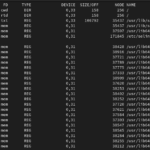Table of Contents
In today’s interconnected world, safeguarding your digital domain is akin to protecting your home. Just as you’d install locks and security systems, your computer needs a robust defense against online threats. Enter iptables, your virtual guardian angel, and at its core lie the magical pathways known as iptable chains. Let’s embark on a journey to demystify these chains, understand their workings, and learn how they can fortify your cyber fortress.
Unraveling the Mystery of iptable Chains
Picture iptable chains as the gatekeepers of your digital castle. They manage the flow of incoming and outgoing network traffic, ensuring only the rightful guests gain entry while keeping out unwanted visitors. Here’s a breakdown of the three primary chains:
- Input: Think of this chain as the front door of your fortress. It screens incoming traffic destined for your system’s services like a vigilant butler. For instance, if someone knocks on your SSH door (port 22), iptables checks its guest list. If the visitor’s name matches, they’re welcomed in; otherwise, they’re politely turned away.
iptables -A INPUT -p tcp --dport 22 -j ACCEPT
- Output: This chain operates like a courteous host, overseeing traffic generated by applications on your system. It ensures that your guests, once inside, behave appropriately before venturing out into the digital world.
- Forward: Imagine this chain as the traffic cop at a busy intersection. If your system acts as a router, directing traffic between networks, this chain manages the flow, ensuring vehicles (packets) reach their destinations safely.
How iptable Chains Keep You Safe
Each chain comprises a set of rules, like instructions for the gatekeepers. When a packet arrives, it’s compared against these rules. If a match is found, the corresponding action is taken—be it welcoming, rejecting, or diverting the packet. Let’s illustrate with a real-world scenario:
Example: You run a web server on your system and want to allow HTTP traffic (port 80) while blocking everything else. You’d create a rule in the Input chain that says, “Welcome guests knocking on port 80; all others, please stay away.”
iptables -A INPUT -p tcp --dport 80 -j ACCEPT
iptables -A INPUT -j DROP
Crafting Your Cyber Defense Strategy
With iptables, you’re not just limited to default rules—you can customize your defenses to suit your needs:
- Tailored Access Control: Open the gates only to trusted visitors by allowing specific traffic to designated ports or IP addresses.
- Stay Vigilant: Keep an eye out for troublemakers by setting up rules to block suspicious activity or known threats.
- Log and Learn: Enable logging to gain insights into who’s knocking at your door, helping you spot potential security risks or misconfigurations.
Safeguarding Your Digital Haven: Best Practices
As you embark on your cybersecurity journey, remember these guiding principles:
- Start with Caution: Embrace a default-deny policy to ensure only authorized traffic gains entry, minimizing your exposure to threats.
- Keep it Minimal: Open only the doors you need, reducing the chances of unwanted guests sneaking in through unnecessary ports.
- Regular Patrols: Periodically review and update your ruleset to stay ahead of evolving threats in the digital wilderness.
- Test the Waters: Before rolling out your defenses, conduct thorough tests to ensure they’re effective and won’t inadvertently lock you out.
Conclusion: Your Digital Sanctuary Awaits
In the ever-changing landscape of cybersecurity, iptable chains stand as stalwart guardians of your digital abode. By understanding their inner workings and following best practices, you can erect formidable defenses against online threats. So, take charge of your cyber fortress, and let iptables be your trusty shield in the ongoing battle for digital security.





